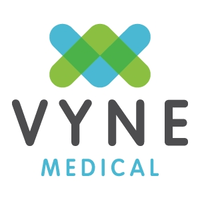Dec 17
2021
Transformation Fuels Opportunities For Healthcare Leaders

By Scott Overholt, chief business officer, Vyne Medical.
Healthcare is ever evolving and constantly shifting in response to consumer trends, regulatory changes and new technologies. Typically, these changes take place gradually with adoption rolling out bit by bit until finally reaching the tipping point among hospitals and health systems. We have observed this in recent years with transitions related to value-based care, electronic health records and interoperability, to name a few.
The impact of COVID-19 on the healthcare industry is unlike any of the changes we have seen in recent years. The change was sudden, swift and required immediate action from every healthcare provider regardless of size, setting or demographics. The pandemic allowed no time for committees, focus groups or research teams to develop lengthy strategic plans. As an industry, it tested our ability to adapt, act quickly, think creatively, and take calculated risks when necessary. The pandemic represents a sea change in healthcare that as leaders, we are all just beginning to grasp.
Business transformation
One area of significant change is the transformation in healthcare business models and connections between providers. Even before COVID, healthcare had observed a significant increase in merger and acquisition activity. The past year accelerated this trend as organizations form partnerships to better weather the lingering impacts of the pandemic.
Small hospitals that have taken bigger hits have sought to be acquired by larger health systems in order to survive. Conversely, large systems with more diversified portfolios and existing services such virtual care and digital functionality are growing as a result of these new acquisitions, partnerships and technologies. As organizations merge and seek to standardize their processes, there is a renewed focus on business function integration and centralization. The result is a more integrated delivery model with increased connections and data sharing between providers.
 Vyne Medical today announced the launch of its new Refyne platform. Purpose built for healthcare, Refyne is designed with the look and feel of a modern consumer-facing app and features to help optimize administrative workflows and maximize reimbursements for hospitals and health systems.
Vyne Medical today announced the launch of its new Refyne platform. Purpose built for healthcare, Refyne is designed with the look and feel of a modern consumer-facing app and features to help optimize administrative workflows and maximize reimbursements for hospitals and health systems.